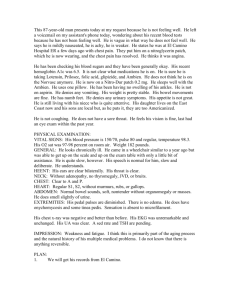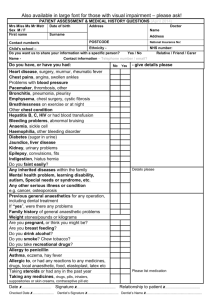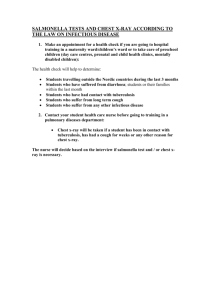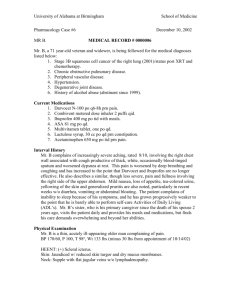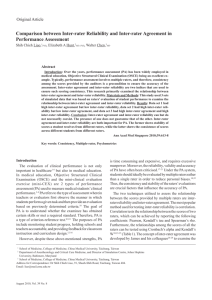inter-rater agreement for chest pain evaluation
advertisement
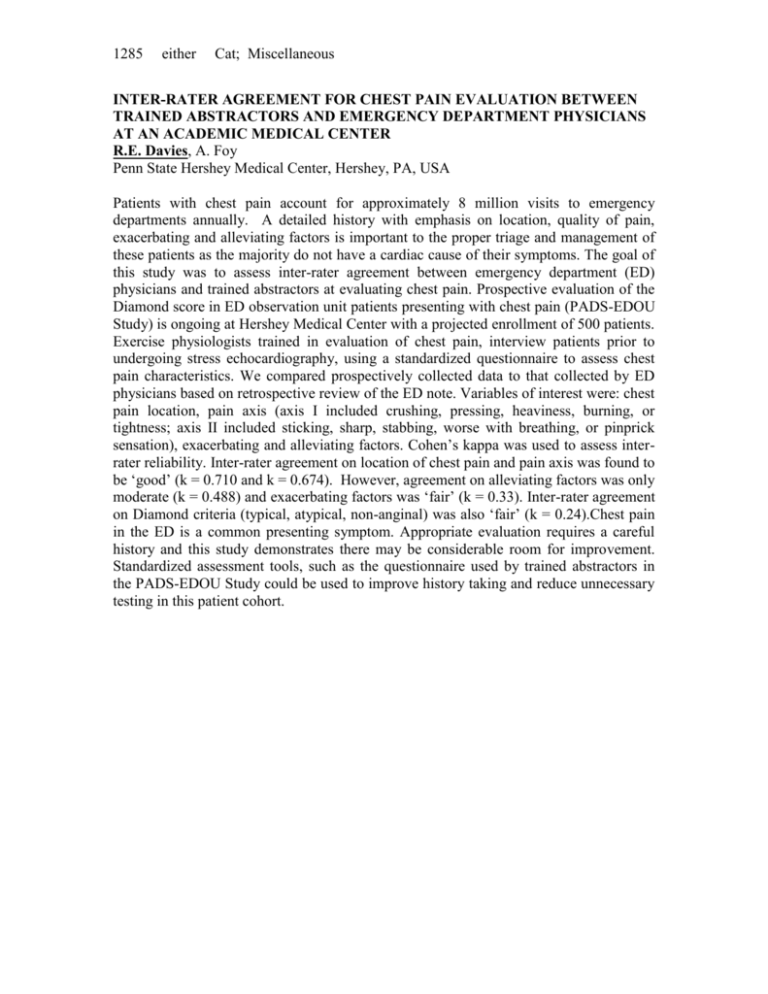
1285 either Cat; Miscellaneous INTER-RATER AGREEMENT FOR CHEST PAIN EVALUATION BETWEEN TRAINED ABSTRACTORS AND EMERGENCY DEPARTMENT PHYSICIANS AT AN ACADEMIC MEDICAL CENTER R.E. Davies, A. Foy Penn State Hershey Medical Center, Hershey, PA, USA Patients with chest pain account for approximately 8 million visits to emergency departments annually. A detailed history with emphasis on location, quality of pain, exacerbating and alleviating factors is important to the proper triage and management of these patients as the majority do not have a cardiac cause of their symptoms. The goal of this study was to assess inter-rater agreement between emergency department (ED) physicians and trained abstractors at evaluating chest pain. Prospective evaluation of the Diamond score in ED observation unit patients presenting with chest pain (PADS-EDOU Study) is ongoing at Hershey Medical Center with a projected enrollment of 500 patients. Exercise physiologists trained in evaluation of chest pain, interview patients prior to undergoing stress echocardiography, using a standardized questionnaire to assess chest pain characteristics. We compared prospectively collected data to that collected by ED physicians based on retrospective review of the ED note. Variables of interest were: chest pain location, pain axis (axis I included crushing, pressing, heaviness, burning, or tightness; axis II included sticking, sharp, stabbing, worse with breathing, or pinprick sensation), exacerbating and alleviating factors. Cohen’s kappa was used to assess interrater reliability. Inter-rater agreement on location of chest pain and pain axis was found to be ‘good’ (k = 0.710 and k = 0.674). However, agreement on alleviating factors was only moderate (k = 0.488) and exacerbating factors was ‘fair’ (k = 0.33). Inter-rater agreement on Diamond criteria (typical, atypical, non-anginal) was also ‘fair’ (k = 0.24).Chest pain in the ED is a common presenting symptom. Appropriate evaluation requires a careful history and this study demonstrates there may be considerable room for improvement. Standardized assessment tools, such as the questionnaire used by trained abstractors in the PADS-EDOU Study could be used to improve history taking and reduce unnecessary testing in this patient cohort.



